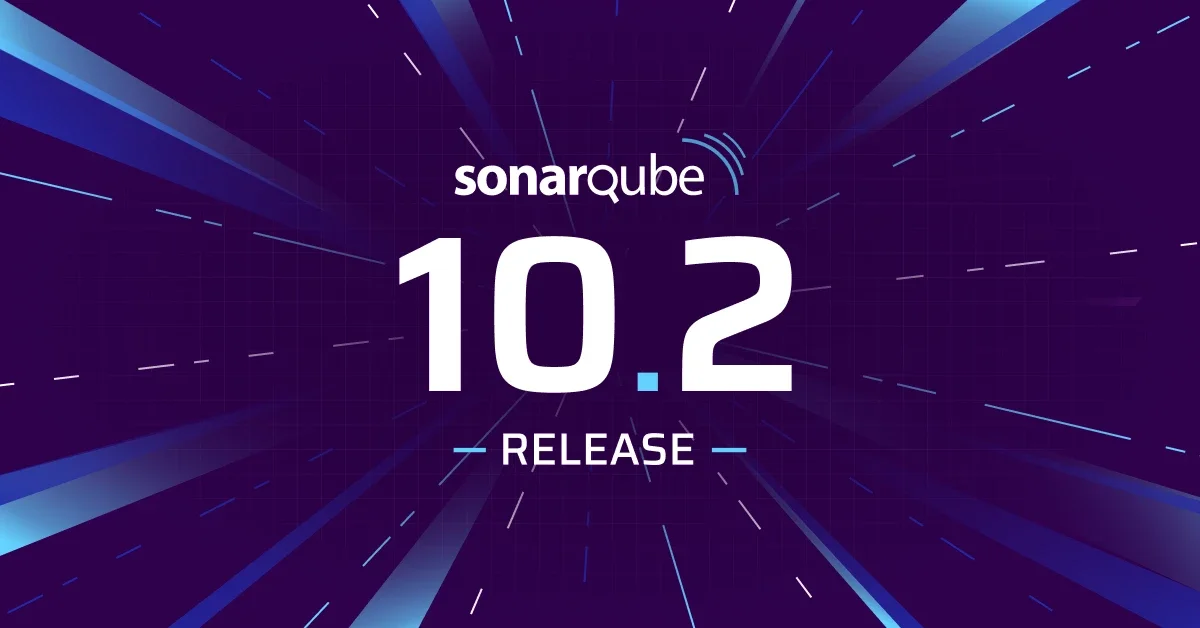In the ever-changing software development landscape, keeping your tools up-to-date is non-negotiable. This new release of SonarQube Server delivers targeted enhancements that directly impact code quality, security, and operational workflows. This post will provide a deep dive into the latest features and enhancements of SonarQube Server 10.2.
Announcing MISRA C++ 2023 Support
With the rising demand for more secure coding practices, particularly in mission-critical applications, SonarQube Server 10.2 brings in a game-changing feature: support for the new MISRA C++ 2023 rules. This update adds 43 rules, meticulously aligned with industry safety standards. These rules are not mere additions but are seamlessly integrated into our "Mission Critical" Quality Profile.
For organizations operating in regulated industries or deploying mission-critical applications, the benefits are manifold. This new support will enhance the security robustness of your codebase and build higher stakeholder confidence by achieving a comprehensive level of safety compliance.
SonarQube Server Security Enhancements
Security Analysis Now Integrated into GitLab Dashboards
SonarQube Server 10.2 extends its security reach into GitLab dashboards. This native visibility means that when SonarQube Server identifies a vulnerability, it is automatically reflected in your GitLab vulnerability report. This synchronization serves as a strategic advantage for organizations that leverage GitLab in their DevOps workflows. By providing a unified view of code health across platforms, it empowers both developers and security teams to more effectively identify, manage, and remediate security vulnerabilities. The result is an optimized workflow that significantly minimizes the time interval between code commit and deployment.
Enhanced Cloud Secrets Detection
To further amplify your organization's security measures, SonarQube Server 10.2 has expanded its cloud secrets detection feature. Now supporting 29 cloud services and capable of identifying a comprehensive range of more than 60 secrets and tokens, this addition fortifies your codebase against vulnerabilities and assists in fulfilling compliance requirements.
Detect Security Misconfigurations in Microsoft Bicep-Generated ARM Templates
Cloud infrastructure security is as crucial as application security. SonarQube Server’s ability to identify security misconfigurations in Azure Resource Manager (ARM) templates generated via Microsoft Bicep adds an extra layer of security to your Azure deployments, thereby making them more resilient against potential vulnerabilities.
Advanced Support for PHP Super-Global Arrays
The efficacy of code analysis in PHP development is no small matter. With this in mind, SonarQube Server 10.2 introduces improved support for PHP super-global arrays. This feature fine-tunes the precision of our PHP analysis algorithms, thereby reducing false negatives.
For developers, this translates into more accurate, actionable code assessments. Meanwhile, security teams gain an added layer of confidence in the integrity of the code. This accuracy eliminates the need for exhaustive manual audits, thereby accelerating the development pipeline.
Streamlined Permission Synchronization from GitHub
Administrative agility is integral to efficient project management. With SonarQube Server 10.2, you can synchronize project permissions directly from GitHub, thereby eliminating the need for manual configurations or custom automation scripts (yes, you are welcome admins!).
This streamlining significantly simplifies the process of project permission management, allowing organizations to focus more on development and less on administrative tasks.
Operational Improvements
Minimizing Reindexing Disruptions Post-Upgrade
Recognizing that smooth operational transitions are essential, SonarQube Server 10.2 introduces an upgrade feature that minimizes reindexing disruptions. This means that as soon as the SonarQube Server UI is available post-upgrade, developers, and administrators can continue their tasks without missing a beat. The optimized reindexing process minimizes workflow interruptions and downtime, thus maintaining organizational productivity and ensuring that deadlines are met.
Enhancing Developer Efficiency and Knowledge Through Learn as You Code (LaYC)
With SonarQube Server 10.2, we continue our commitment to improving both the efficiency and educational aspects of the software development process by introducing the Learn as You Code (LaYC) feature. Integrated within Level 1 rules, LaYC provides immediate and contextually relevant guidance when a code issue emerges. The feature directs you to a specialized 'How Do I Fix This' section, equipped with framework-specific sample code to expedite issue resolution.
In addition to facilitating quick fixes, LaYC offers the option to explore comprehensive explanations and industry best practices. This approach not only minimizes the time spent on issue rectification but also serves as a resource for skill enhancement, thus elevating the expertise of both individual developers and development teams as a whole.
Additional Innovations
Flexible Main Branch Designation
Changing your project's main branch is now a seamless affair with SonarQube Server 10.2. This flexibility benefits teams not relying on DevOps platforms for project onboarding, as it allows administrators to effortlessly pivot the project’s focus without losing any historical data.
Enhanced Synchronization between SonarQube for IDE and SonarQube Server
SonarQube Server 10.2 takes code analysis a step further by enhancing synchronization features between SonarQube for IDE and SonarQube Server. Developers now have the power to mute issues directly within their IDE via SonarQube for IDE, thus streamlining the review process by preventing these tagged issues from reappearing in future analyses.
Introducing the new Clean Code Taxonomy
Enhance the quality and security of your code with the integration of the new Clean Code taxonomy within SonarQube Server. The taxonomy consists of the Clean Code attributes which are consistent, intentional, adaptable, and responsible. When code meets the attributes, it is Clean Code, which results in the qualities that software should have to be successful.
This update aims to highlight more clearly what’s happening in your code, facilitating more decisive action for both individuals and teams.
As a developer, you'll find each issue classified not only by its severity—now represented as Low, Medium, or High based on software qualities—but also by the Clean Code attributes. Please note that the old taxonomy will gradually be phased out. Processes and integrations based on the old taxonomy will not be disrupted as compatibility is preserved and will be removed at a later date.
For team leads, this enriched information becomes a powerful tool for prioritizing issues and guiding your team's efforts toward improving code quality and security. You can now evaluate issues not just on their immediate impact, but also on how they align with broader Clean Code principles.
This is the first in a series of updates aimed at aligning our interface and categorizations with the new Clean Code taxonomy, offering you a more detailed and meaningful understanding of how to effectively achieve Clean Code and drive impactful software.
Several Language Updates
Every release of SonarQube Server comes with a range of language enhancements, designed to elevate your coding experience. The updates for SonarQube Server 10.2 not only aim to streamline your development workflow but also to fortify code quality and security across multiple programming languages.
Python:
- Faster incremental analysis for Python
- Generate stubs for known typed Python libraries available on PyPI
- Added valuable Core Python rules
Java/Kotlin:
- Support of Gradle Kotlin DSL + 7 dedicated rules for writing well-architected and easily maintainable Java code
PHP
- Faster incremental analysis for PHP
IaC
- Improved support of Azure Resource Manager (ARM)
- Detect security misconfiguration on Microsoft Bicep
.NET
- Set of 9 new rules for DateTime
- Almost all developers use date and times in their applications and their misuse is one of the most common bugs particularly when timezones are involved.
AcuCOBOL
- Improved support for AcuCOBOL
- Parser and Preprocessor improvements
Next Steps
SonarQube Server 10.2 represents an advancement in simplifying, securing, and accelerating your code quality journey. To fully capitalize on these cutting-edge features, we warmly invite you to download SonarQube Server 10.2 and share your invaluable feedback with us.

